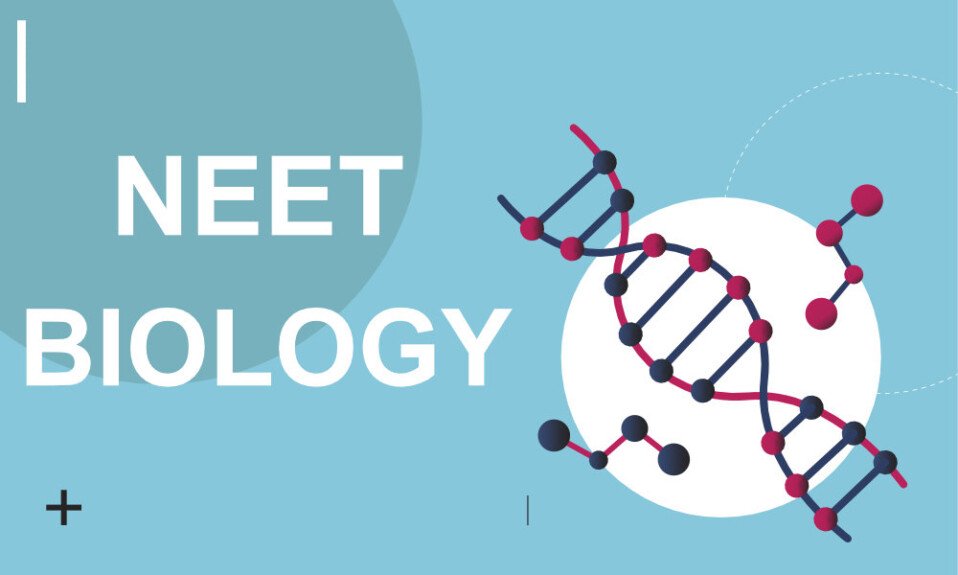1.The “A” in coenzyme- A is ———–
(a) Alkylation
(b) Acetylation
(c) Amination
(d) Amino acid
Answer:(b) Acetylation
2.Which of the following statement/s is/are correct?
(a) Enzyme is a biocatalyst
(b) Enzyme increases the rate of reaction
(c) Enzyme decreases the activation energy of the reaction
(d) All the above
Answer:(d) All the above
3.Nature of the enzyme is
(a) Protein
(b) Lipid
(c) Carbohydrate
(d) None
Answer:(a) Protein
4. An enzyme was crystallized for the first time by
(a) John Northrop
(b) Edward Buchner
(c) J.B. Sumner
(d) None
Answer:(c) J.B. Sumner
5. Which of the following is correct?
(a) Apoenzyme + Cofactor = Holoenzyme
(b) Apoenzyme – Cofactor = Holoenzyme
(c) Apoenzyme =Cofactor – Holoenzyme
(d) None
Answer:(a) Apoenzyme + Cofactor = Holoenzyme
6. Enzymes are classified into _____ types
(a) Two
(b) Three
(c) Five
(d) Six
Answer:(d) Six
7. Competitive inhibitor of an enzyme is
(a) Structural analogue of enzyme
(b) Functional analogue of enzyme
(c) Functional analogue of substrate
(d) Structural analogue of substrate
Answer:(d) Structural analogue of substrate
8.Who is the father of enzymology?
(a) Anton van Leeuwenhoek
(b) Edward Howell
(c) JB Sumner
(d) John Northrop
Answer:(d) John Northrop
9. Majority of the enzymes are inactive at
(a) At 25oC
(b) At 15oC
(c) Between 30-40oC
(d) Above 70oC
Answer:(a) At 25oC
10. Induced fit theory for the formation of Enzyme-Substrate complex was proposed by
(a) Koshland
(b) Charles Leibeg
(c) Buchner
(d) Fischer
Answer:(d) Fischer
11. SI Unit for enzyme activity is
(a) Bel
(b) mho
(c) Hertz
(d) Katal
Answer:(b) mho
12. Which of the following is the reason for Gout disease?
(a) Deficiency of Xanthine Oxidase enzyme
(b) Overproduction of Xanthine Oxidase
(c) Deficiency of ß-galactosidase enzyme
(d) Deficiency of Lipase enzyme
Answer:(d) Deficiency of Lipase enzyme
13. Which of these enzymes is related to molecular biology?
(a) DNA Ligase
(b) DNA topoisomerase
(c) Polymerase
(d) All the above
Answer:(a) DNA Ligase
14. Deficiency of the enzyme ß-glucocerebrosidase results in
(a) Gaucher’s Disease
(b) Faber’s disease
(c) Krabbe’s disease
(d) Lesch-Nyhan Syndrome
Answer:(d) Lesch-Nyhan Syndrome
15. Enzyme that differ in amino acid sequence but catalyze the same reaction are_______
(a) Co-factors
(b) Co-enzymes
(c) Apo enzymes
(d) Isoenzymes
Answer:(a) Co-factors
16. The temperature at which the maximum activity of the enzyme occurs is
(a) Optimum temperature
(b) Maximum Temperature
(c) Minimum Temperature
(d) None
Answer:(c) Minimum Temperature
17. The class of enzymes that catalyzes synthetic reactions where two molecules are joinedtogether and ATP is used is
(a) Hydrolases
(b) Lyases
(c) Ligases
(d) Isomerases
Answer:(b) Lyases
18. Non-protein organic part of the enzyme is__________
(a) Co-factor
(b) Co-enzyme
(c) Apo enzyme
(d) Isoenzyme
Answer:(a) Co-factor
19. Pepsin and urease are examples for which class of enzymes
(a) Hydrolases
(b) Ligases
(c) Oxidoreductases
(d) Lyases
Answer:(d) Lyases
20. Which of the following enzymes is elevated in alcoholism
(a) Hepatitis
(b) Serum Glutamate Pyruvate Transmittance
(c) Acid Phosphatase
(d) glutamyl transpeptidase
Answer:(d) glutamyl transpeptidase
21.The coenzyme of Nicotinic acid is ——
(a) FMN
(b)FAD
(c) NAD
(d)TPP
Answer:(c) NAD
22.Pantothenic acid is also known as ——-
(a) Coenzyme- A
(b)PLP
(c) Nicotinamide
(d) TH4
Answer:(a) Coenzyme- A
23.In competitive inhibition Vmax——-
(a) Increases
(b) Decreases
(c) Remaining unchanged
(d) None of above
Answer:(c) Remaining unchanged
24.The detergent SDS is used in ——
(a) Chromatography
(b)Centrifugati
(c) Electrophoresis
(d) All of the above.
Answer:(c) Electrophoresis
25.Biochemically active form of folic acid is ——-
(a) TPP
(b) TH4′
(c) FMN
(d)PLP
Answer:(b) TH4′
26.The ideal example of isoenzyme is ——
(a) ATcase.
(b)PDH
(c) LDH
(d)PFK
Answer:(c) LDH
27.——–is the 1sl member of vitamin-B family
(a) Folic acid
(b) Thiamine
(c) Biotin
(d)Riboflavin
Answer:(b) Thiamine
28.——-is the inhibitor of ATcase.
(a) ATP
(b)CTP
(c) GTP
(d)CMP
Answer:(c) GTP
29.The “A” is coenzyme-.A is —-
(a) Acetylation
(b) Alkylation
(c)Amination
(d)Acetaldehyde
Answer:(a) Acetylation
30.Biochemically active form of riboflavin is —–
(a) FMN
(b)Both a & c
(c) FAD
(d)None of above
Answer:(b)Both a & c
31.The active form of vitamin folic acid is ———-
(a) Tetrahydrofolate
(b) Glutamic Acid
(c) Dihydrofolate
(d) Pteridine Residue
Answer:(a) Tetrahydrofolate
32.The biochemical function of coenzyme A is ————–
(a) To carry hydroxyl l groups
(b) To carry hydrogen atoms
(c) To carry acetyl groups
(d) To carry water molecule
Answer:(c) To carry acetyl groups
33.The symptom(s) of biotin deficiency are————–
(a) Anemia
(b) Loss of appetite
(c) Nausea
(d) All of the above
Answer:(d) All of the above
34.———-vitamin serves as carrier of C02 in carboxylation reactions.
(a) Niacin
(b) Thiamine
(c) Folic Acid
(d) Biotin
Answer:(d) Biotin
35.The Coenzyme PLP is associated with —-metabolism.
(a) Nucleic acid
(b) Amino acid
(c) Lipid
(d) Carbohydrate
Answer:(b) Amino acid
36.Coenzyme A is also known as ———-.
(a) Riboflavin
(b)Folic acid
(c) Thiamine
(d)Pantothenic acid
Answer:(d)Pantothenic acid
37.The value of Km increases in ———–inhibition.
(a) Non-competitive
(b)Uncompetitive
(c) Competitive
(d)Mixed
Answer:(c) Competitive
38.The ————–chromatography is based on molecular size.
(a) Affinity
(b)Gel exclusion
(c) Thin layer
(d)Paper
Answer:(b)Gel exclusion
39.The enzyme possess additional site beside active site is ———–
(a) Catalytic site
(b)Both a & b
(c) Allosteric site
(d)None of the above
Answer:(c) Allosteric site
40.The coenzyme(s) of riboflavin is / are ———-
(a) FAD
(b)Both a & c
(c) FMN
(d)NAD+
Answer:(b)Both a & c
41.Which of the following is the deficiency disease of thiamine?
(a) Cheilosis
(b) Beriberi
(c) Glossitis
(d)Pellagra
Answer:(b) Beriberi
42.The coenzyme of nicotinic acid is ———–
(a) FAD
(b) TPP
(c) NAD
(d)FMN
Answer:(c) NAD
43.In non-competitive inhibition, the Km value is ———
(a) Unchanged
(b)Decreases
(c) Increases
(d)None of above
Answer:(a) Unchanged
44.The ideal example of isoenzyme is ———–
(a) PDH
(b)LDH
(c) PFK
(d)AT Case
Answer:(b)LDH
45.The detergent SDS is used in ———–
(a) Centrifugation
(b)Chromatography
(c) Electrophoresis
(d)None of above
Answer:(c) Electrophoresis
46.lodoacetate is an example of ——– inhibitor of enzymes.
(a) Reversible
(b)Irreversible.
(c) Allosteric
(d) All of above
Answer:(a) Reversible
47.The active form of vitamin nicotinic acid is I are ———-
(a) NAD+
(b)NADP+
(c) Both (a) & (b)
(d) ‘None of above
Answer:(c) Both (a) & (b)
48.is the inhibitor of ATCase.
(a) ATP
(b)CTP
(c) GTP
(d)CMP
Answer:(b)CTP
49.The biochemical function of pantothenic acid is ——-.
(a) Transfer of acyl group
(b) Transfer of Hydrogens
(c) Transfer of amino group
(d) Transfer of alkyl group
Answer:(a) Transfer of acyl group
50.———-is the deficiency disease of vitamin nicotinic acid.
(a) Beriberi
(b) Glossitis
(c) Pellagra
(d) Anemia
Answer:(c) Pellagra



